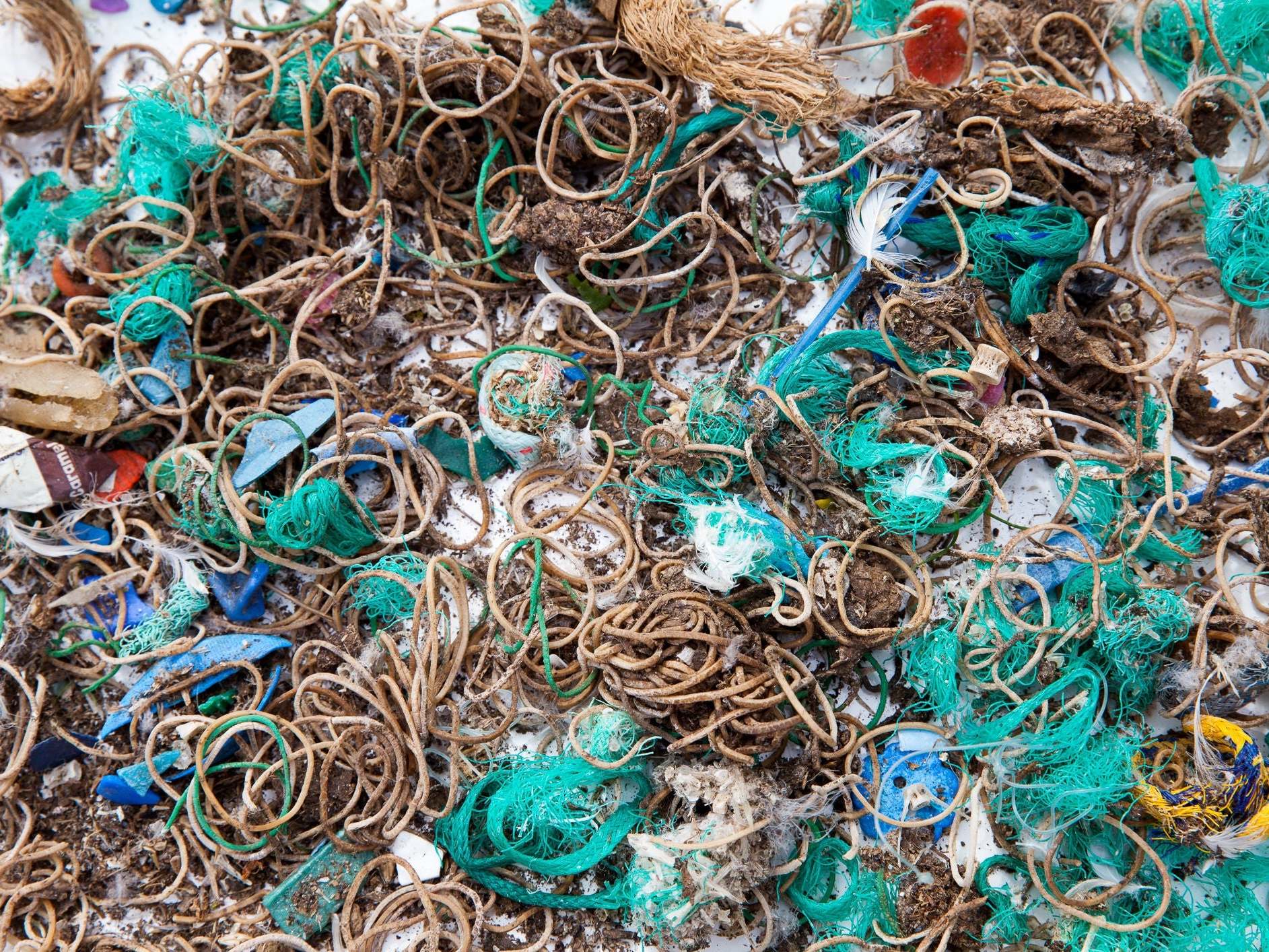Mystery of Cornish island strewn with rubber bands solved by seabird experts
‘Gulls can live up to 25 years so that’s more than two decades of hoovering up the rubbish we chuck in the oceans,’ scientist says

When an uninhabited island became littered with thousands of brown, yellow and green elastic bands, experts were initially baffled.
Especially considering Mullion Island off Cornwall is so remote that a permit is required to visit.
But the mystery was solved by bird experts, who concluded the rubber bands were coming from Cornish horticultural fields, where they had been used to tie together bunches of cut flowers. They had been picked up by seabirds mistakenly thinking they were worms.
It’s believed great black-backed and herring gulls mistake the bands for food while away foraging on the mainland, and deposit them at roosting sites on the island. They were found among pellets regurgitated by the birds.
Small bundles of green fishing net and twine from the sea were also discovered among the undigested food, again likely to have been mistaken by the gulls for tasty morsels.
Sea creatures seen tangled in plastic
Show all 8One gull was found to have died after becoming caught on a 10cm fishing hook.
Mark Grantham, from the West Cornwall Ringing Group, who discovered the rubber bands, said: “We first noticed them on a monitoring visit during the breeding season and were puzzled why there were so many and how they’d got there,” he said.
“To save disturbing the nesting birds, we made a special trip over in the autumn to clear the litter. Within just an hour we’d collected thousands of bands and handfuls of fishing waste.
“The gull breeding season was disappointingly poor in 2019 and these hidden human pressures are doing nothing to help our seabirds.”
Mullion Island is a small, rocky outpost off the Lizard Peninsula, cared for by the National Trust, that provides a sanctuary for nesting seabirds including gulls, cormorants and shags.
Numbers of great black-backed gull have fallen by nearly one-third in recent years, while the herring gull – the species notorious for pinching food from tourists – now appears on the UK Red List of Birds of Conservation Concern.
The National Trust said it was distressing to see seabirds becoming victims of human activity, and called on businesses to consider how they dispose of plastic, latex and other materials that could harm wildlife.
Mark Avery, a bird scientist and former conservation director of the RSPB, told The Independent it was another example of how humans polluting the oceans was having consequences for birds and mammals in the food chain.
“Swallowing rubber bands will reduce the amount of space in a bird’s stomach for proper food and nutrition,” he said.
“We know that bits of plastic remain stuck in birds’ guts and bit by bit get broken down. Rubber bands won’t be good for them, and might actually be very bad.
“Seabirds can live up to 25 years so that’s more than two decades of hoovering up all the rubbish we chuck in the oceans.”
Subscribe to Independent Premium to bookmark this article
Want to bookmark your favourite articles and stories to read or reference later? Start your Independent Premium subscription today.

Join our commenting forum
Join thought-provoking conversations, follow other Independent readers and see their replies